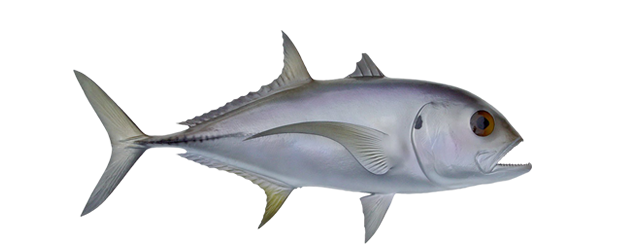Jack, Horse-eye

View Regulations

Scientific Name
Caranx latus


Common Names
Bigeye jack, Ojo gordo, Goggle-eye, Horse-eye trevally, Black jacks, Cabalis, False jacks


Description
The Horse-eye Jack is characterized by its larger eyes and silvery body. Although similar in appearance to the Crevalle Jack, the Horse-eye can be distinguished by its scales, as the Crevalle only has a small number of scales. The dorsal fins and gill cover have black markings on them and the forked tail is yellow in coloration.


Habitat & Behaviour
Horse-eye Jacks can be found at mid-depth Swimbaitming in schools through offshore reefs or oil rigs. However, on occasion they have been known to Swimbait in pairs with other species of fish. Juvenile Horse-eye’s prefer muddy bottomed areas and have been known to penetrate fresh water rivers.


Natural Prey
Horse-eye Jack subsist on a diet of small fish and invertebrates such as shrimp or crabs.


Handling Tips
Spines on top. Otherwise harmless.

- Lucky Tackle Box
- Billfish Bounty in the Heart of the Mayan World – Guatemala
- The Best Species of Shark to Catch
- How to Catch a Shark: what equipment do you need?
- The Best Winter Fishing Spots in Texas





